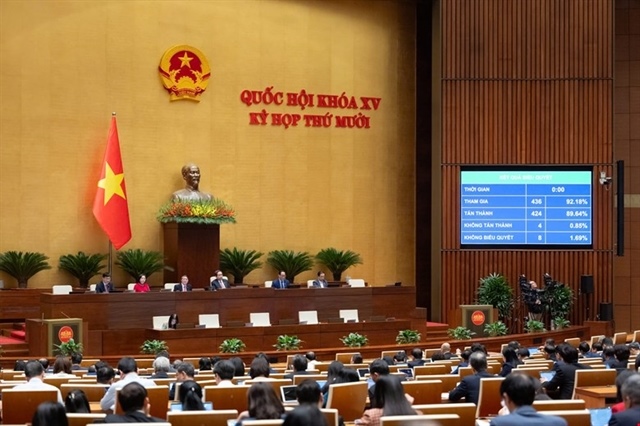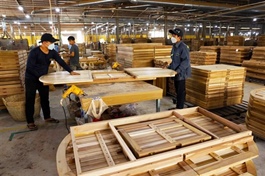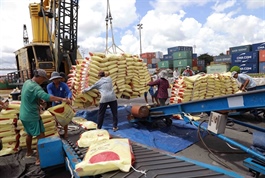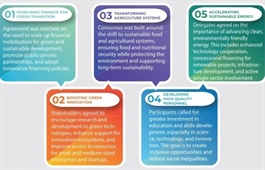Industrial hubs strengthened following provincial mergers
Industrial hubs strengthened following provincial mergers
Several large industrial hubs will hope to be strengthened following an administrative merger, paving the way for a surge in foreign direct investment.
The Party Central Committee has agreed to slash the number of provinces in Vietnam, and therefore provincial-level administrative units across the country, to 28 provinces and six centrally-governed cities. The government and local authorities will develop detailed plans for these mergers, which will be presented to the National Assembly for approval in sessions in May and June.
Notably, as part of the plan, the provinces of Ba Ria-Vung Tau and Binh Duong will be merged with Ho Chi Minh City under the name Ho Chi Minh City. The political and administrative centre will remain in the current Ho Chi Minh City.
Once this merger is completed, the city will officially become a “megacity” as per the United Nations’ definition, defined as an urban agglomeration with a population of 10 million or more.
In the first quarter of 2025, Ho Chi Minh City became the runner-up in attracting foreign-invested capital across the country with a total registered amount of $1.4 billion, representing 13 per cent of the national total, a 58.3 per cent increase on-year. Meanwhile, between January and March, Ba Ria-Vung Tau acquired $863.8 million, and Binh Duong $287.75 million.
Another merger on the way is between Bac Ninh and Bac Giang in the north. In the first quarter of 2025, Bac Giang led the country in regional GDP growth, and Bac Ninh led the country in attracting FDI.
In the first quarter of 2025, Bac Ninh continues to maintain the leading position in attracting FDI with a total capital of more than $2.2 billion, mainly high-tech and semiconductor projects.
“Merging and expanding the administrative boundaries will help the province expand economic scale, increase competitiveness, attract investment and make the most of the development potential, create more motivation for socioeconomic development, ensure national defence and security, build a clean, strong political system, and improve the material and spiritual life of the people,” National Assembly Chairman Tran Thanh Man said at an event in Bac Ninh on April 13.
Bac Giang currently leads the country in regional GDP growth. According to the province’s Department of Statistics, regional GDP in the first quarter of 2025 of the whole province of Bac Giang is estimated to reach about 14.02 per cent, the highest in the country.
Bac Ninh has 12 industrial parks (IPs) with a total area of 6,4000 hectares, operating with an average occupancy rate of 62 per cent. Four others are being constructed.
Meanwhile, Bac Giang currently has 16 IPs in operation, which gradually establish closed manufacturing and logistics chains with the presence of big names such as Hana Micron, Foxconn, Luxshare-ICT, and JA Solar.
In another case, Hung Yen, which will incorporate Thai Binh province, is considered a highlight in the industrial real estate sector thanks to a prime location near the capital Hanoi, about 30-50km away depending on the area. It serves as an important bridge between Hanoi and major economic centres such as Haiphong and Quang Ninh.
“Expanding admin boundaries allows provinces to plan additional large-scale industrial zones, providing more options for businesses. With increased land availability, domestic and foreign enterprises can easily find suitable locations to establish factories, alleviating the shortage of industrial land in high-demand areas,” Doan Duy Hung, chairman of the Vietnam Industrial Real Estate Information Portal.
Phan Huu Thang, chairman of the Vietnam Industrial Park Finance Association, told VIR that foreign investors look for localities that have a comprehensive industrial ecosystem, including clean land, ready-to-lease factories, efficient logistics systems, business support services, and a skilled workforce.
“In addition, synchronised infrastructure investment helps businesses reduce logistics costs, impacting their decisions,” Thang said. “Along with advantages, it would take a lot of time to complete procedures for the merging process, which causes delay in licensing projects. In addition, it also takes time to build proposals and plans for the above specialised IPs models. Thus, foreign investors should be patient to get the opportunities.”
- 15:47 22/04/2025



























